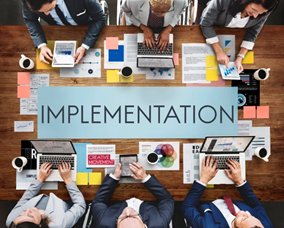
7 Steps For Effective Risk Management In 2021
Risk Management Process Steps
When it comes to business, risk comes in handy. Risk is a natural part of the business, and it is often believed that managing risks effectively is the key to a successful business. While many organizations do not understand the risks of the firm, many have a combating mechanism for it with a team of certified risk professionals.
Risk Management Process Steps
It is certainly important and necessary for businesses to gain a holistic approach through risk management courses toward the assumed/unassumed, monitored/unmonitored, managed/unmanaged, or aligned/unaligned risks. One has to be cautious in the business as business risks can come from anywhere like cybersecurity events, regulatory obstacles, operational challenges, supply chain disruptions, or financial challenges.
New projects come with new risks in business, and while an organization can’t entirely avoid risk, one can surely anticipate and mitigate risks through an established risk management process. Risk management is an ongoing process of identifying, treating, and managing risks. The risk management course brings professionals to the front to mitigate organizational risks. The process of identification and tracking risks can benefit the organization by providing more efficient resource planning and providing better tracking of project costs and more accurate estimates of return or investment. The risk management process also increases awareness of legal requirements, better prevention of physical injuries, illness, and flexibility when a challenge arises due to the change in plan.
It is important to integrate ERM into decision making and risk managers should be involved in the strategy process.
7 steps of risk management are:
- Establish the context

Before identifying the risk, the risk management team decides the scope of the activity. The term ‘establish the context’ means to build a profile of the risks and the environment in which those risks will occur. It defines the scope for the risk management process and sets a criterion against the risks.
- Identification of possible pitfalls

After deciding or anticipating the scope of the risk, one has to identify the possible pitfalls. The process of identification takes into account the various layers of management such as operational, legal, financial, and reputational. Every organization has a different level of risk and different perspectives pertaining to the specific industry.
When it comes to risk identification, the risk management team should be aware of the organization, the industry, and the legal, social, economic, political, and climatic vulnerabilities. The financial strengths and weaknesses, losses and gains, and the manufacturing and supplying mechanism should be well known to the risk management team.
- Risk Assessment

A risk assessment can help in prioritizing risks across the company. The process further identifies the issues to highlight the appropriate response to drive risk-based monitoring response. In the assessment process, it is critical to make the best guess possible to prioritize the implementation of the risk management plan. Learn how to assess risks for the organization with RIMS-CRMP Certification.
The process, further, evaluates the severity of the risk and its impact is questioned.
- Potential Risk Treatments

Once the risks are identified and assessed all the techniques and mechanisms to mitigate or eliminate the risks should be considered. One can either transfer the risk to another party, as the other party will bear the cost, or one can simply avoid the risk by using the right tactic. Avoiding the risk may seem like the best option, but it also brings the potential loss, if there could be any gain.
The organisation can also opt to retain or control the risk or to completely eliminate it. Risks can be controlled through avoidance or controlling losses. This implies a certain loss of exposure in the firm.
- Create a plan to implement

After thoroughly identifying and assessing the risks, the risk management team has discovered potential risk treatments. Now the risk management team should create a plan to implement the treatment. The risk management plan should propose applicable and effective security controls for managing the risks.
While the risk management concept is old, the professionals come up with new and contemporary techniques to combat risks.
- Implementation process

Starting with the highest priority first, implement the plan. The team will start to solve or at least mitigate the risk so that the effect will be reduced in the coming time. Effectively treating and mitigating the risk also means using the team’s resources efficiently.
- Review and evaluation of the plan

Risk monitoring should be followed the last. After the implementation, the team should review and evaluate the plan to see how it is working or how it worked. The review will help the risk management team to assess future risks in a better way. The periodic assessment of the evaluation of the plan will help in eliminating or mitigating the upcoming possible risks.
We are well aware that there is no one size fits all theory for managing risks in business. But following these steps and using them as per the industry or organisation, the business can flourish. A risk management course will help the risk professional to use the risk management process and benefit their organisations.


